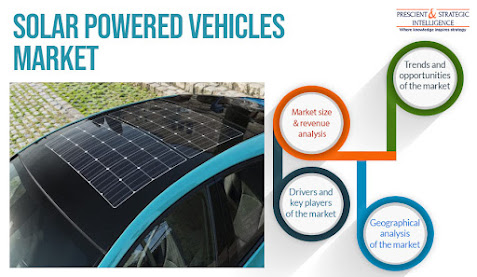Why will Solar Powered Vehicles Surge in Asia-Pacific in Future?
The 21st century is definitely the time of electric mobility, with countries around the world taking numerous initiatives to embrace it. Globally, purchase subsidies are being offered, taxes are being reduced, and even dedicated parking lanes are being offered to encourage people to go for electric vehicles (EVs). Now, while these efforts are bearing fruit, they are also creating a problem. In a world already starved of energy, the growing number of EVs is only going to make this problem worse, by further driving the demand for electricity.
This creates another problem; still, the majority of the electricity, especially in developing countries, is produced from fossil fuels. In its latest report, the International Energy Agency (IEA) says, “The share of renewables in electricity generation is projected to increase to almost 30% in 2021.”, meaning that 70% of the energy will still be produced from natural gas, coal, and oil. As per P&S Intelligence, these apparent disadvantages of the growing EV stock around the world would be the key drivers for the solar powered vehicles market in the years to come.
However, to remedy this, automakers around the world are scrambling to improve their solar charging systems. For instance, Squad Mobility is working on a solar-powered car that can go at up to 45 km/h, while a variant with a maximum speed of 80 km/h is also under development. Similarly, the LightYear One being developed by a Dutch start-up will reportedly have a full-charge driving range of 725 km! In the same vein, Sono Motors’s Sion can gather enough electricity from its PV panels every day to drive for 33 km (21 miles), and it is claimed to have a driving range of 249 km (155 miles) on a single charge.
Thus, one of the key prerequisites for the growth of the solar powered vehicles market would be a sharp drop in the price of PV panels. Thanks to the pandemic-induced lockdowns, production surge in China, and emergence of efficient monocrystalline PV panels in 2019, their prices have witnessed a sharp decline. As per an article published on Forbes in September 2020, the price of solar panels fell from $0.63 per Watt in the first quarter of 2016 to $0.21 per Watt by the first quarter of 2020.
Thus, combined with the continuous research and development (R&D), the declining price of this technology could spell a fortune for solar-powered vehicles.




Comments
Post a Comment